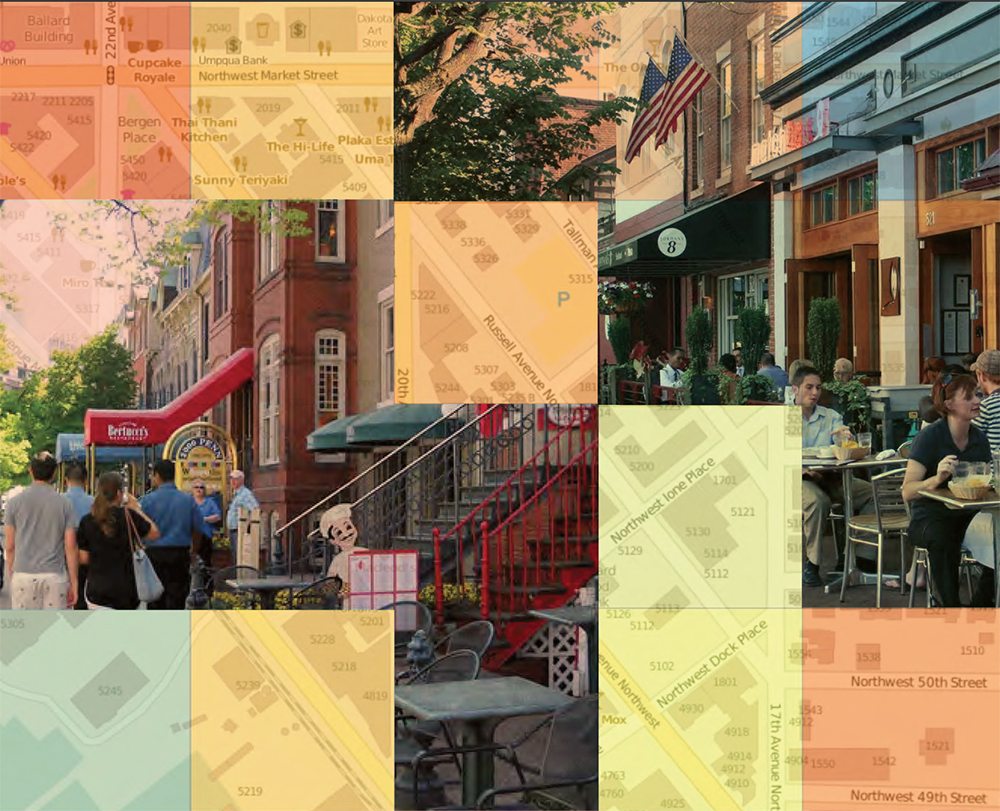EXECUTIVE SUMMARY
All across America, blocks of older, smaller buildings are quietly contributing to robust local economies and distinctive livable communities. Buildings of diverse vintage and small scale provide flexible, affordable space for entrepreneurs launching new businesses and serve as attractive settings for new restaurants and locally owned shops. They offer diverse housing choices that attract younger residents and create human-scaled places for walking, shopping, and social interaction. These modest, often-overlooked buildings are irreplaceable assets for America’s new urban age. This study demonstrates the unique and valuable role that older, smaller buildings play in the development of sustainable cities. Based upon statistical analysis of the built fabric of three major American cities, this research finds that established neighborhoods with a mix of older, smaller buildings perform better than districts with larger, newer structures when tested against a range of economic, social, and environmental outcome measures.
For generations, planners, preservationists, and community leaders have debated and discussed the importance of retaining older, smaller buildings. Jane Jacobs’ 1961 book, The Death and Life of Great American Cities, launched the conversation. Jacobs asserted that urban renewal, which replaced richly textured streets of small, mixed-age buildings with blocks of much larger new structures, drained life from neighborhoods and deadened urban centers. She argued that older buildings provide critical space for entrepreneurial ventures and a healthy mix of local businesses. Today, after decades of advocacy by preservationists and community groups, Jacobs’ ideas are widely accepted. Her insights about the contributions of older buildings inform community plans across the country.
The tools for implementing these ideas are not fully developed in many cities, however. Outdated zoning regulations, overly prescriptive building and energy codes, misdirected development incentives, and limited financing tools continue to make it difficult to reuse older structures and to retain the human scale of older blocks and neighborhoods. In addition, and perhaps more significantly, some leading urban thinkers have recently raised fundamental questions about the validity of Jacobs’ ideas for today’s world. Where do older, smaller buildings fit within cities that are seeking to maximize transit investments, increase density, and compete in the global economy? Are the lessons of Jacobs’ 1961 book still valid in the 21st century? What have we learned from more than 50 years of experience? What does the growing mountain of data reveal about the contributions of older buildings to successful urban places?
In an effort to answer these questions, the National Trust’s Preservation Green Lab mined newly available public and private sources to examine the role that older, smaller buildings play in the context of overall urban development. This research focused on three cities with strong real estate markets and extensive older fabric: San Francisco, Seattle, and Washington, D.C. Looking not just at historically designated or older buildings, but all existing structures across these three urban landscapes, the research team empirically documented the age, diversity of age, and size of buildings and statistically assessed the relationships between these characteristics and 40 economic, social, cultural, and environmental performance metrics. Each city was divided into a grid of 200-meter-by-200-meter squares (about one to two square city blocks). Squares composed of commercial and mixed-use areas of the city were analyzed using statistical models, generating “apples to apples” comparisons of results across diverse urban landscapes.
To read the full article, please download the following PDF:


